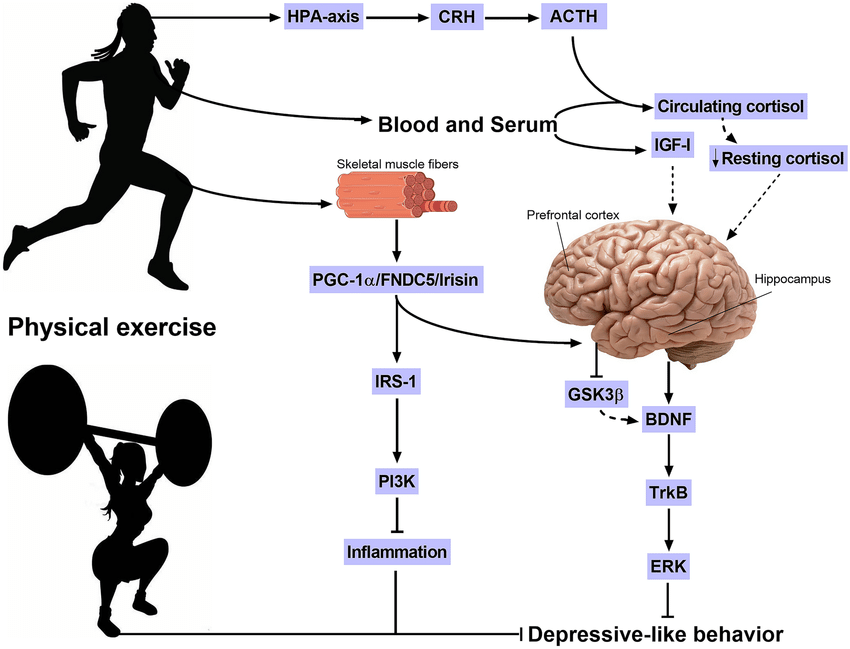Depression often creates a frustrating cycle: exercise can significantly improve mood, yet the condition itself strips away the very motivation and energy needed to get moving. If this feels familiar, you are not alone. Research consistently shows that fatigue, low mood, and a simple lack of motivation are the most common barriers for people with depression. This guide is here to offer practical, gentle strategies to help you break that cycle. We’ll explore how to build a sustainable workout habit, even on days when getting out of bed feels like a monumental task. You’ll find realistic advice on how to get motivation to work out that honors where you are right now.
Understanding the Depression-Exercise Connection
Before diving into the how, it’s helpful to understand the why. Knowing the science behind how your brain and body are working can reframe the struggle not as a personal failure, but as a biological reality you can learn to navigate.

Why Depression Makes Exercise Feel Impossible
Depression isn’t just sadness; it’s a complex condition with physical symptoms. The intense, persistent fatigue it causes is more than just feeling tired—it’s a deep exhaustion that can make simple tasks feel draining. Another key symptom is anhedonia, the inability to feel pleasure from activities you once enjoyed. This makes it incredibly difficult to look forward to a workout.
When you combine low energy with an inability to anticipate a positive feeling, the brain’s effort-based decision-making process flags exercise as “not worth it.” It’s a biological hurdle, not a lack of willpower.
How Exercise Improves Depression Symptoms
Despite the difficulty, the benefits of moving your body are powerful. Research, including extensive studies from institutions like Harvard Health, suggests that consistent exercise can be as effective as medication for some people with mild to moderate depression.
Here’s how it works:
- It changes your brain chemistry: Exercise boosts feel-good neurotransmitters like endorphins and dopamine. It also increases Brain-Derived Neurotrophic Factor (BDNF), a protein that supports the health of your brain cells.
- It reduces inflammation: Chronic inflammation is increasingly linked to depression. Physical activity is a potent anti-inflammatory.
- It improves sleep: Regular exercise can help regulate your sleep patterns, which are often disrupted by depression.
- It provides a sense of accomplishment: Finishing a workout, no matter how small, offers a tangible victory that can build self-esteem.
Even short bursts of activity can make a difference. The goal isn’t to run a marathon tomorrow; it’s to take the first small step today.
Start Small: Setting Realistic Exercise Goals
When you’re dealing with depression, the “all-or-nothing” mindset is a trap. Aiming for an hour-long gym session every day can lead to feeling overwhelmed and giving up entirely. The secret is to start ridiculously small.
Commit to just 5 or 10 minutes of movement. That’s it. A 10-minute walk around the block. A 5-minute stretching video on YouTube. A few bodyweight squats while you wait for your coffee to brew.
Any movement is a success. By setting the bar incredibly low, you make it easier to start. Once you begin, you might find you have the energy for another five minutes. Over time, as your energy and mood improve, you can gradually increase the duration and intensity. But for now, celebrate the small wins.
Choose Exercise Types That Work Best for Depression
Not all exercise is created equal when it comes to mental health benefits. A major meta-analysis published in the British Medical Journal (BMJ) found several types to be particularly effective.

Walking and Running
Walking is perhaps the most accessible form of exercise. It’s free, requires no special equipment, and you can do it anywhere. A brisk walk, especially outdoors, combines physical activity with exposure to sunlight and nature, both of which are known mood boosters. Running offers similar benefits with higher intensity.
Strength Training
Lifting weights or doing bodyweight exercises like push-ups and squats has been shown to be highly effective in reducing depressive symptoms. The act of getting physically stronger can improve your sense of self-efficacy and body image. You don’t need a gym; you can start at home with simple exercises.
Yoga and Mind-Body Practices
Yoga combines physical postures with breathing exercises and meditation. This mind-body connection is excellent for calming the nervous system and reducing the ruminating thoughts that often accompany depression. Other practices like tai chi and qi gong offer similar benefits.
Create a Structured Workout Schedule
When motivation is low, routine is your best friend. Don’t wait until you feel like exercising—you might be waiting a long time. Instead, schedule it into your calendar like a non-negotiable appointment.
Find a time that works for you. Some research suggests that morning workouts can be particularly helpful for setting a positive tone for the day and boosting energy levels. If you’re looking for tips on this, learning how to motivate yourself to workout in the morning can be a great place to start. Whatever time you choose, stick to it as consistently as possible to build a solid habit.
Use Accountability Strategies
It’s harder to back out when someone else is counting on you. Accountability can come in many forms:
- Find a workout buddy: Ask a friend or family member to join you for walks or gym sessions.
- Join a class: Group fitness classes provide structure and social connection.
- Hire a trainer: If it’s within your budget, a personal trainer can provide personalized guidance and motivation.
- Use an app: Many fitness apps have community features where you can share your progress.
If you prefer to exercise by yourself, you can still build accountability. Exploring techniques on how to motivate yourself to workout alone can provide structure even without a partner.
Remove Barriers and Make Exercise Accessible
Reduce the number of steps between you and your workout. Every small bit of friction can feel like a huge wall when your energy is low. Make it as easy as possible to say yes.
- Lay out your workout clothes the night before.
- Keep your walking shoes right by the door.
- If you work out at home, have your equipment (yoga mat, weights) visible and ready to go.
- Choose a gym that is on your way home from work.

Build a Reward System
While the long-term goal is to find joy in the activity itself (intrinsic motivation), a little external reward can help get you started. Plan a small, healthy reward for after you complete your workout.
This could be watching an episode of your favorite show, taking a long, relaxing bath, listening to a podcast, or spending 30 minutes on a hobby you enjoy. Choose something that you genuinely look forward to.
Track and Celebrate Your Progress
Your brain is wired to respond to positive reinforcement. Acknowledge your effort. Get a calendar and put a big checkmark or a sticker on every day you move your body. It doesn’t matter if it was for five minutes or fifty—you did it.
Seeing a visual chain of your successes can be incredibly motivating. It proves that you can show up for yourself, even when it’s hard. Share your wins with a supportive friend or family member who understands your journey.
Adjust Your Approach on Low-Mood Days
There will be days when even a 10-minute walk feels impossible. That’s okay. On those days, the goal is not to push through but to adjust.
Instead of skipping entirely, try a lower-intensity alternative. This could be some gentle stretching, a few yoga poses, or even just walking around your house during TV commercials. If all you can manage is to stand up and stretch for one minute, that is still a victory. And if you truly need to rest, give yourself permission to do so without guilt.
Find Activities You Actually Enjoy
For exercise to become a lifelong habit, it has to be something you don’t completely dread. Experiment with different activities until you find something that feels more like play than work.
Try dancing in your living room, hiking a local trail, swimming, cycling, or following along with a fun workout video on YouTube. Many people find success learning how to motivate yourself to exercise at home because it offers privacy and convenience. The more enjoyable the activity is, the more likely you are to stick with it.

A Final Word on Self-Compassion
Starting an exercise routine with depression is an act of courage. Be kind to yourself through this process. There will be good days and bad days. The goal is not perfection but gentle persistence. Every step you take, no matter how small, is a step toward feeling better.
By focusing on consistency over intensity, you can learn how to stick to a workout routine that supports your mental health for the long run. We at Not One Type are here to support you on your wellness journey.


You may also like this
How Working Out Improves Your Mood?
Some days, just getting out of bed feels like a win. On those days, the...
Nov
How to Motivate Yourself to Workout in the Morning (11 Proven Strategies)
Getting out of bed for a morning workout can feel nearly impossible, especially when your...
Nov
How to Motivate Yourself to Workout Alone: 15 Proven Strategies That Work
Let’s be honest: mustering the energy to work out is tough enough. But doing it...
Nov
Lost Motivation to Work Out? 8 Reasons Why & How to Recover
Losing motivation to work out is a common experience that affects even the most dedicated...
Nov
How to Get Motivation to Work Out: 17 Strategies That Work
Lack of motivation to work out is a universal challenge. It doesn’t matter if you’re...
Nov
How to Stick to a Workout Routine: 15 Proven Strategies for Long-Term Success
Sticking to a workout routine is one of the most common challenges in fitness. The...
Nov